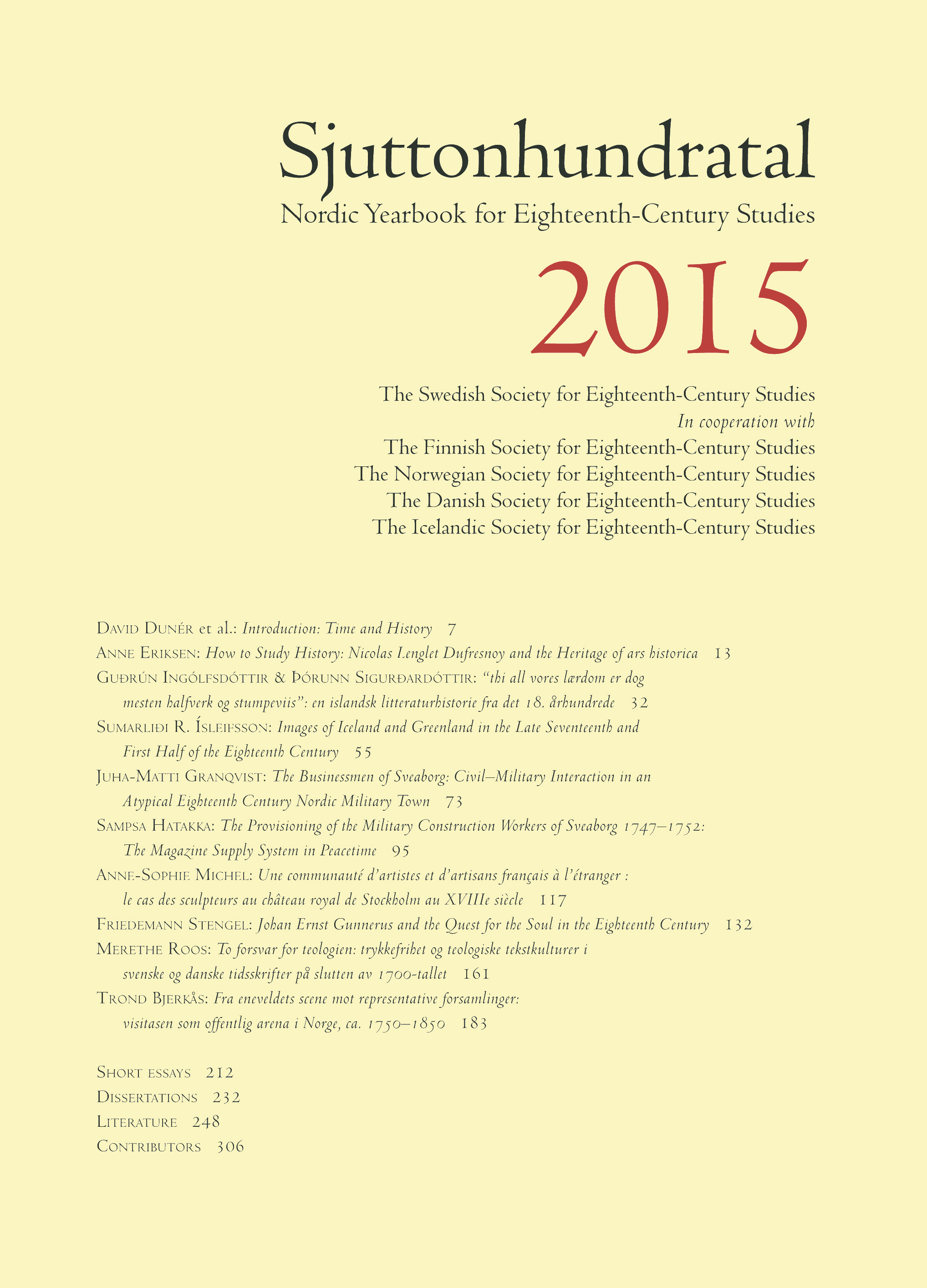Fra eneveldets scene mot representative forsamlinger: visitasen som offentlig arena i Norge, ca. 1750–1850
DOI:
https://doi.org/10.7557/4.3531Keywords:
absolutism, church, public arenas, representation, social control, visitationsAbstract
From the Stage of State Power to Representative Assembly?: The Visitation as a Public Arena, 1750–1850
In the eighteenth century, the bishops’ visitations to dioceses constituted an important part of the control apparatus of the Church and the absolutist state. The article examines visitations in Norway in terms of public arenas, where the common people interacted with Church officials. During the period 1750 to 1850, the visitations were gradually transformed from arenas in which the state manifested its power towards a largely undifferentiated populace, to meeting places that resembled representative assemblies with both clerical and common lay members. Thus, it adapted to new forms of public participation established by the reforms of national and local government in the first half of the nineteenth century. At the same time, the process amounted to an elitization, because a few representatives replaced of the congregation as a whole. It is also argued that parish churches in the eighteenth century functioned as general public forums with a number of other functions in addition to worship, such as being places of trade and festivities. This seems to change in the nineteenth century, when churches became more exclusively religious arenas. The transition can be seen in the context of new forms of participation in Church matters. Many clerics wanted greater participation by sections of the commoners, in order to strengthen control in moral and religious matters.









